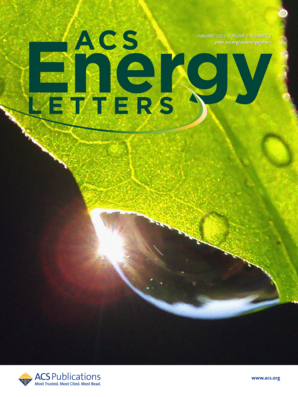CAZac: an activity descriptor for carbohydrate-active enzymes
IF 19.3
1区 材料科学
Q1 CHEMISTRY, PHYSICAL
引用次数: 0
Abstract
The Carbohydrate-Active enZYme database (CAZy; www.cazy.org) has been providing the reference classification of carbohydrate-active enzymes (CAZymes) for >30 years. Based on literature survey, the sequence-based families of CAZymes are enriched with functional data by using the International Union of Biochemistry and Molecular Biology Enzyme Commission (EC) number system. However, this system was not developed to search or compare functional information. To better harness functional information, we have developed CAZac (CAZyme activity descriptor), a multicriterion system that describes CAZymes’ mechanisms, glycosidic bond orientations, subsites and inter-residue connectivities. This new system, implemented for glycoside hydrolases, glycoside phosphorylases, transglycosidases, polysaccharide lyases and lytic polysaccharide monooxygenases allows complex searches in the CAZy database to uncover the evolution of substrate specificity and mechanisms of CAZymes across families.CAZac:碳水化合物活性酶的活性描述符
碳水化合物活性酶数据库(CAZy; www.cazy.org)提供碳水化合物活性酶(CAZymes)的参考分类已有 >30 年历史。根据文献调查,基于序列的 CAZymes 家族通过使用国际生物化学与分子生物学联盟酶委员会(EC)编号系统丰富了功能数据。然而,该系统并不是为搜索或比较功能信息而开发的。为了更好地利用功能信息,我们开发了 CAZac(CAZyme activity descriptor),这是一个多标准系统,用于描述 CAZymes 的机制、糖苷键方向、亚位点和残基间连接性。这一新系统适用于糖苷水解酶、糖苷磷酸化酶、转糖苷酶、多糖裂解酶和裂解多糖单氧酶,可以在 CAZy 数据库中进行复杂的搜索,从而揭示 CAZymes 不同家族底物特异性和机制的演变。
本文章由计算机程序翻译,如有差异,请以英文原文为准。
求助全文
约1分钟内获得全文
求助全文
来源期刊

ACS Energy Letters
Energy-Renewable Energy, Sustainability and the Environment
CiteScore
31.20
自引率
5.00%
发文量
469
审稿时长
1 months
期刊介绍:
ACS Energy Letters is a monthly journal that publishes papers reporting new scientific advances in energy research. The journal focuses on topics that are of interest to scientists working in the fundamental and applied sciences. Rapid publication is a central criterion for acceptance, and the journal is known for its quick publication times, with an average of 4-6 weeks from submission to web publication in As Soon As Publishable format.
ACS Energy Letters is ranked as the number one journal in the Web of Science Electrochemistry category. It also ranks within the top 10 journals for Physical Chemistry, Energy & Fuels, and Nanoscience & Nanotechnology.
The journal offers several types of articles, including Letters, Energy Express, Perspectives, Reviews, Editorials, Viewpoints and Energy Focus. Additionally, authors have the option to submit videos that summarize or support the information presented in a Perspective or Review article, which can be highlighted on the journal's website. ACS Energy Letters is abstracted and indexed in Chemical Abstracts Service/SciFinder, EBSCO-summon, PubMed, Web of Science, Scopus and Portico.
 求助内容:
求助内容: 应助结果提醒方式:
应助结果提醒方式:


